-
 Bitcoin
Bitcoin $81,470.6259
-2.28% -
 Ethereum
Ethereum $1,790.7527
-2.95% -
 Tether USDt
Tether USDt $0.9999
0.03% -
 XRP
XRP $2.0607
-6.00% -
 BNB
BNB $591.1549
-2.91% -
 Solana
Solana $124.2009
-1.34% -
 USDC
USDC $1.0000
0.01% -
 Dogecoin
Dogecoin $0.1621
-5.61% -
 Cardano
Cardano $0.6372
-6.99% -
 TRON
TRON $0.2326
0.82% -
 Toncoin
Toncoin $3.8888
0.80% -
 Chainlink
Chainlink $13.0942
-5.24% -
 UNUS SED LEO
UNUS SED LEO $9.1023
-5.55% -
 Stellar
Stellar $0.2605
-3.86% -
 Avalanche
Avalanche $18.3294
-6.73% -
 Shiba Inu
Shiba Inu $0.0...01207
-4.91% -
 Sui
Sui $2.2362
-7.91% -
 Hedera
Hedera $0.1579
-8.64% -
 Polkadot
Polkadot $3.9790
-4.28% -
 Litecoin
Litecoin $81.6801
-5.49% -
 MANTRA
MANTRA $6.1848
-3.34% -
 Bitcoin Cash
Bitcoin Cash $291.7782
-5.06% -
 Dai
Dai $0.9999
-0.02% -
 Bitget Token
Bitget Token $4.4587
-4.83% -
 Ethena USDe
Ethena USDe $0.9999
-0.01% -
 Pi
Pi $0.6892
-10.83% -
 Hyperliquid
Hyperliquid $12.5163
-0.38% -
 Monero
Monero $215.9594
-0.93% -
 Uniswap
Uniswap $5.7942
-3.66% -
 Aptos
Aptos $5.1254
-4.01%
What is the difference between the UTXO model and the account model of blockchain?
The UTXO model, used by Bitcoin, treats cryptocurrency like cash, while the account model, used by Ethereum, operates like a bank account, affecting transaction processing and scalability.
Mar 28, 2025 at 01:35 pm
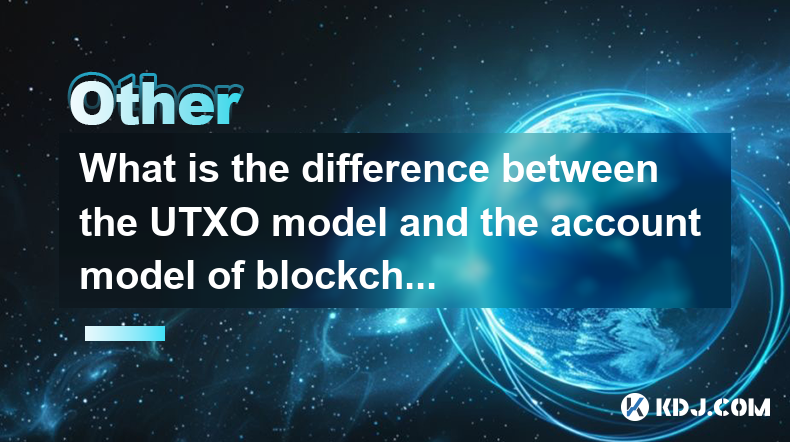
Understanding the Fundamental Differences: UTXO vs. Account Model
The core difference between the Unspent Transaction Output (UTXO) model and the account model lies in how they track and manage cryptocurrency balances. The UTXO model views cryptocurrency as a collection of unspent outputs, while the account model uses a ledger that tracks balances for each account. This seemingly small difference leads to significant variations in transaction processing and overall blockchain architecture.
The UTXO model, famously used by Bitcoin, treats each transaction output as an individual, independent unit. Think of it like physical cash: each bill is a separate entity. Transactions "spend" these UTXOs, creating new ones as outputs. This approach ensures transparency and allows for efficient verification of transactions. Every transaction references specific UTXOs as inputs and generates new UTXOs as outputs.
In contrast, the account model, used by Ethereum and many other blockchains, operates more like a traditional bank account. Each account has a balance, and transactions directly modify these balances. This simplifies transaction processing, making it potentially faster and more scalable. The model tracks the balance for each address directly, reducing the complexity of managing unspent outputs.
Detailed Comparison of UTXO and Account Models
Let's delve deeper into the specifics, highlighting the key distinctions between these two fundamental blockchain models.
Transaction Processing:
UTXO: Transactions in the UTXO model involve selecting specific UTXOs as inputs, whose total value must equal or exceed the transaction's output value. Any excess value is returned as "change" in a new UTXO. This process is highly secure and transparent, as each transaction’s inputs and outputs are clearly defined.
Account: In the account model, transactions simply debit and credit accounts. The process is more straightforward and less computationally intensive, potentially leading to faster transaction times. However, this simplicity can also present challenges in terms of security and transparency.
Scalability and Performance:
UTXO: The UTXO model can face scalability challenges as the number of unspent outputs grows. Managing and searching through a large number of UTXOs can become computationally expensive. This can impact transaction speeds and overall blockchain performance.
Account: The account model generally offers better scalability, as it doesn't require searching through a massive UTXO set. This makes it more suitable for handling a high volume of transactions, potentially improving the overall speed and efficiency of the blockchain.
Security and Privacy:
UTXO: The UTXO model's transparency contributes to its security. Every transaction is verifiable by referencing specific UTXOs. This makes it harder to manipulate or double-spend funds.
Account: The account model's simplified structure can potentially introduce security vulnerabilities if not implemented carefully. While generally secure, the lack of direct UTXO tracking can make auditing and verification slightly more complex.
Smart Contracts:
UTXO: Implementing complex smart contracts on UTXO-based blockchains is more challenging. The inherent structure of UTXOs doesn't lend itself easily to the intricate logic required by many smart contracts.
Account: The account model is inherently better suited for smart contracts. The ability to directly manipulate account balances simplifies the implementation of complex logic and functionality within smart contracts.
Transaction Fees:
UTXO: Transaction fees in UTXO-based systems are often determined by the size of the transaction, reflecting the computational cost of processing the inputs and outputs.
Account: Transaction fees in account-based systems can be more flexible, potentially incorporating factors beyond transaction size, such as network congestion or gas consumption for smart contract execution.
Data Storage:
UTXO: UTXO models require storing all unspent transaction outputs, leading to a potentially larger blockchain size over time. This can impact storage requirements and potentially network bandwidth.
Account: Account models only need to store the current account balances, potentially resulting in a smaller blockchain size compared to UTXO models, assuming comparable transaction volumes.
Further Considerations and Specific Examples
Bitcoin, a prominent example of a UTXO-based blockchain, prioritizes security and decentralization. Its relatively simple transaction model contributes to its robustness and resilience against attacks. However, this simplicity also limits its scalability and smart contract capabilities.
Ethereum, on the other hand, utilizes the account model, enabling the development and execution of sophisticated smart contracts. This flexibility comes at the cost of potentially increased complexity in transaction processing and security considerations.
Frequently Asked Questions
Q: Can a blockchain use both UTXO and account models simultaneously?
A: No, a blockchain typically uses either the UTXO or the account model. Hybrid approaches exist but are rare and generally involve distinct layers or modules within the blockchain architecture.
Q: Which model is better: UTXO or account?
A: There's no single "better" model. The optimal choice depends on the specific goals and priorities of the blockchain. UTXO excels in security and transparency, while the account model offers better scalability and smart contract capabilities.
Q: How does the UTXO model prevent double-spending?
A: The UTXO model prevents double-spending because each UTXO can only be spent once. Attempting to spend the same UTXO twice will result in the transaction being rejected by the network.
Q: What is the impact of the growing number of UTXOs on the Bitcoin network?
A: The growing number of UTXOs can lead to increased storage requirements and potentially slower transaction processing times on the Bitcoin network. Various techniques, like coinjoin transactions, are being explored to mitigate this issue.
Q: Are there any other blockchain models besides UTXO and account?
A: While UTXO and account models are the most prevalent, other approaches exist, often incorporating elements of both or representing variations on the core concepts. These are less common and generally less widely adopted.
Q: How does the account model handle transaction conflicts?
A: The account model handles transaction conflicts through mechanisms like transaction ordering and conflict resolution protocols built into the consensus mechanism. These protocols ensure that only valid transactions are processed and that account balances remain consistent.
Disclaimer:info@kdj.com
The information provided is not trading advice. kdj.com does not assume any responsibility for any investments made based on the information provided in this article. Cryptocurrencies are highly volatile and it is highly recommended that you invest with caution after thorough research!
If you believe that the content used on this website infringes your copyright, please contact us immediately (info@kdj.com) and we will delete it promptly.
- Peter Schiff Doubles Down on His Deep Dislike for Bitcoin, Mocking Its "Digital Gold" Identity
- 2025-03-31 16:50:12
- Solana's (SOL) Price Dipped Below $140 as the Market Took a Slight Beating
- 2025-03-31 16:50:12
- Astherus Rebrands to Aster, Shifting Strategic Focus to Become the Leading Decentralized Perpetuals Exchange (Perps DEX)
- 2025-03-31 16:45:12
- Top Crypto to Buy With the Most Bullish Sentiment
- 2025-03-31 16:45:12
- Dawgz AI ($DAGZ) - The Coin With AI Technology
- 2025-03-31 16:40:13
- Kaspa (KAS) Price Prediction for April 2025
- 2025-03-31 16:40:13
Related knowledge
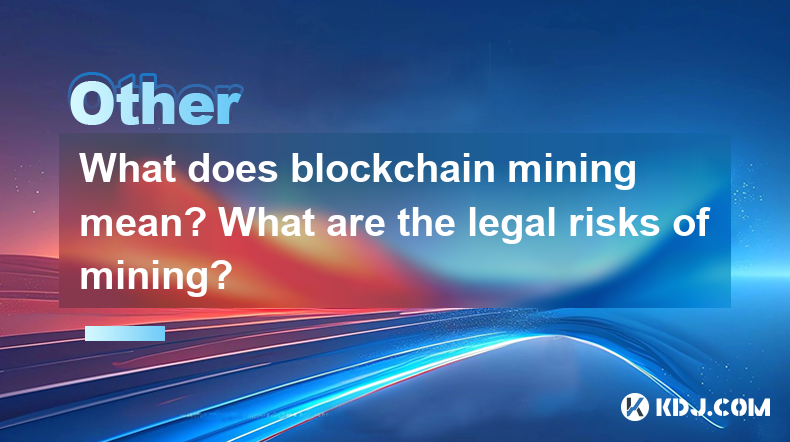
What does blockchain mining mean? What are the legal risks of mining?
Mar 31,2025 at 05:07pm
Blockchain mining is the process by which transactions are verified and added to the public ledger, known as the blockchain. Miners use powerful computers to solve complex mathematical problems, which, once solved, allow them to add a block of transactions to the blockchain. In return, miners are rewarded with cryptocurrency, typically Bitcoin. This pro...
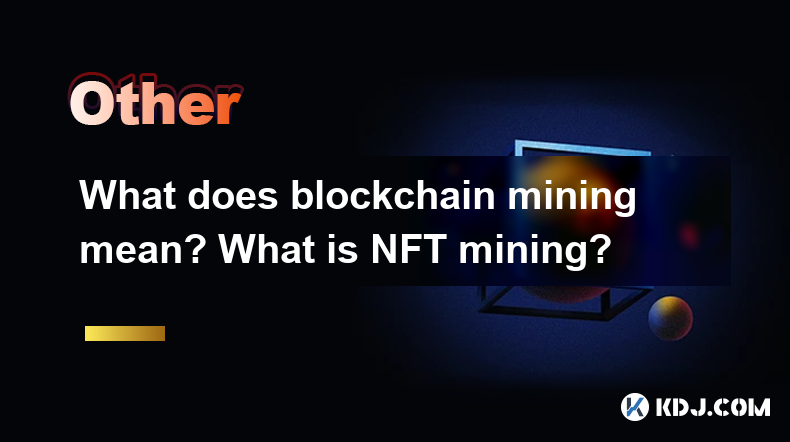
What does blockchain mining mean? What is NFT mining?
Mar 31,2025 at 04:07pm
Blockchain mining is a crucial process in the world of cryptocurrencies, particularly for networks like Bitcoin and Ethereum. It involves verifying transactions and adding them to the blockchain, a decentralized ledger. Miners use powerful computers to solve complex mathematical problems, which, when solved, allow them to add a block of transactions to ...
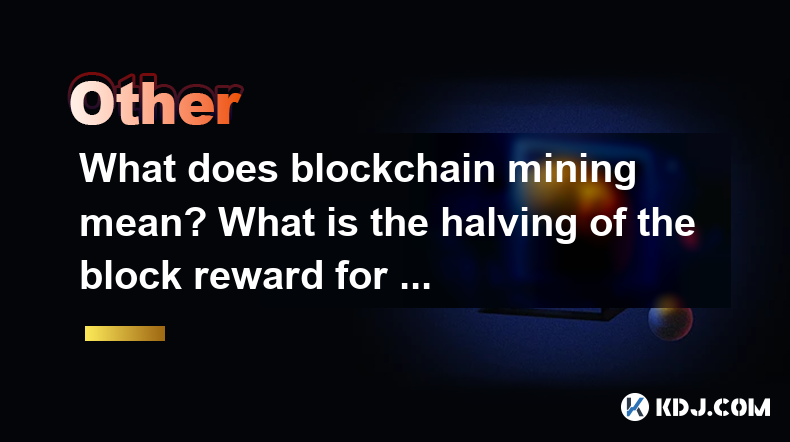
What does blockchain mining mean? What is the halving of the block reward for mining?
Mar 31,2025 at 03:43pm
Blockchain mining is a crucial process in the world of cryptocurrencies, particularly for networks like Bitcoin. It involves solving complex mathematical problems to validate transactions and add them to the blockchain, a public ledger of all cryptocurrency transactions. Miners use powerful computers to compete in solving these problems, and the first t...
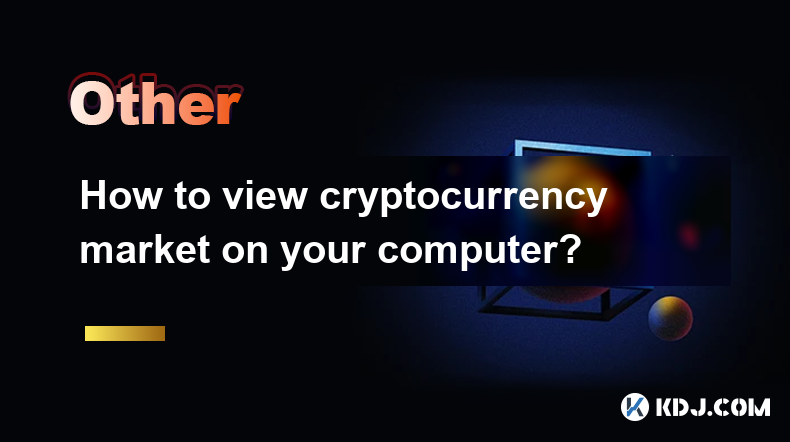
How to view cryptocurrency quotes on your computer?
Mar 31,2025 at 02:10pm
The best cryptocurrency market viewing tools and methodsMany software and websites can help you track cryptocurrencies. Which tool to choose depends on your needs and technical level. From simple price tracking to advanced chart analysis, there are many options. Here are some popular options: Web application: Many exchanges offer free web-side market vi...

The relationship between block browsers and decentralized applications
Mar 30,2025 at 07:35pm
Understanding the InterplayBlock browsers and decentralized applications (dApps) share a symbiotic relationship within the cryptocurrency ecosystem. Block browsers act as crucial tools for interacting with and monitoring the blockchain, while dApps leverage this underlying blockchain infrastructure to provide their functionality. This interplay is esse...
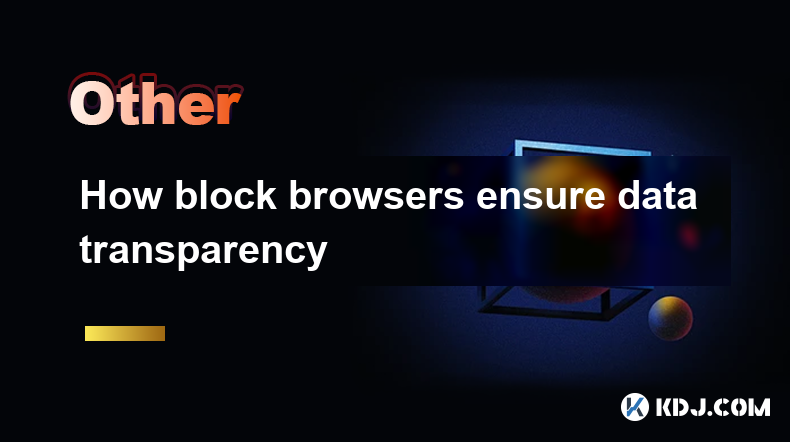
How block browsers ensure data transparency
Mar 30,2025 at 06:49am
Block browsers are designed to provide a transparent view into the inner workings of blockchain networks. Unlike traditional browsers that primarily access centralized servers, block browsers interact directly with the decentralized ledger, offering users a window into the immutable record of transactions. This transparency is a cornerstone of blockcha...

What does blockchain mining mean? What are the legal risks of mining?
Mar 31,2025 at 05:07pm
Blockchain mining is the process by which transactions are verified and added to the public ledger, known as the blockchain. Miners use powerful computers to solve complex mathematical problems, which, once solved, allow them to add a block of transactions to the blockchain. In return, miners are rewarded with cryptocurrency, typically Bitcoin. This pro...

What does blockchain mining mean? What is NFT mining?
Mar 31,2025 at 04:07pm
Blockchain mining is a crucial process in the world of cryptocurrencies, particularly for networks like Bitcoin and Ethereum. It involves verifying transactions and adding them to the blockchain, a decentralized ledger. Miners use powerful computers to solve complex mathematical problems, which, when solved, allow them to add a block of transactions to ...

What does blockchain mining mean? What is the halving of the block reward for mining?
Mar 31,2025 at 03:43pm
Blockchain mining is a crucial process in the world of cryptocurrencies, particularly for networks like Bitcoin. It involves solving complex mathematical problems to validate transactions and add them to the blockchain, a public ledger of all cryptocurrency transactions. Miners use powerful computers to compete in solving these problems, and the first t...

How to view cryptocurrency quotes on your computer?
Mar 31,2025 at 02:10pm
The best cryptocurrency market viewing tools and methodsMany software and websites can help you track cryptocurrencies. Which tool to choose depends on your needs and technical level. From simple price tracking to advanced chart analysis, there are many options. Here are some popular options: Web application: Many exchanges offer free web-side market vi...

The relationship between block browsers and decentralized applications
Mar 30,2025 at 07:35pm
Understanding the InterplayBlock browsers and decentralized applications (dApps) share a symbiotic relationship within the cryptocurrency ecosystem. Block browsers act as crucial tools for interacting with and monitoring the blockchain, while dApps leverage this underlying blockchain infrastructure to provide their functionality. This interplay is esse...

How block browsers ensure data transparency
Mar 30,2025 at 06:49am
Block browsers are designed to provide a transparent view into the inner workings of blockchain networks. Unlike traditional browsers that primarily access centralized servers, block browsers interact directly with the decentralized ledger, offering users a window into the immutable record of transactions. This transparency is a cornerstone of blockcha...
See all articles






















































































